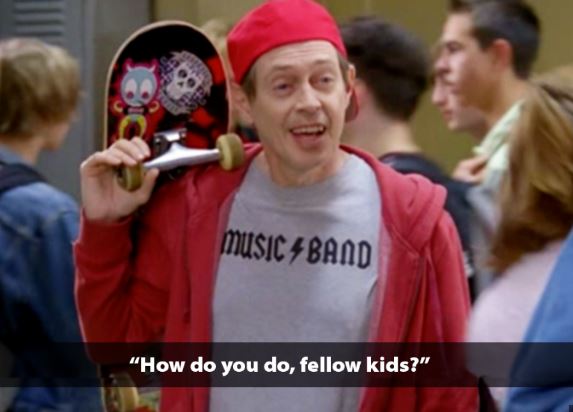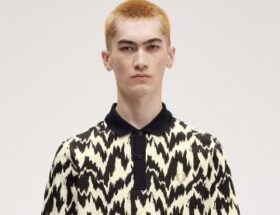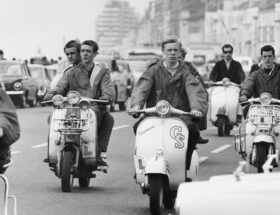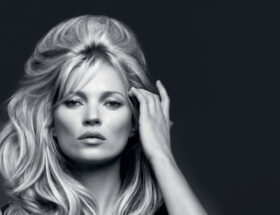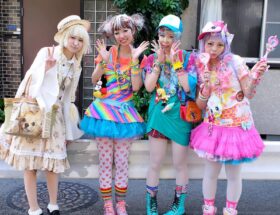Fashion is a revolving door—bell-bottoms fade, then flare back; grunge dies, then resurrects. Every 15 to 20 years, trends we thought were buried resurface with a vengeance. Why? Some say it’s nostalgia, others point to economics, but a compelling theory ties it to puberty: the moment we first define “cool” shapes what we revive decades later. This article explores the cyclical nature of fashion, blending psychology, sociology, and history to uncover why the past keeps dressing up as the present. From Y2K’s shiny reboot to the ‘90s plaid invasion, let’s decode the 15–20-year trend loop.
The 15–20-Year Cycle: A Pattern Emerges
Fashion historians have long noticed a rhythm. Wide ties of the 1940s returned in the ‘60s; ‘70s flares strutted back in the ‘90s; ‘90s minimalism hit runways in the 2010s. The cycle hovers around 15 to 20 years—long enough to feel fresh, short enough to spark recognition.
Tracking the Timeline: Historical Evidence
Take the 1970s disco era: glittery platforms and flared trousers dazzled nightclubs. By the mid-‘90s, they were back—think Spice Girls in platform sneakers and flared jeans. Fast forward to the 2010s, and flares reemerged on Gucci runways. A 2018 study by the Textile Institute found that 68% of designers cited “past decades” as inspiration, with a 15–20-year gap dominating.
Or consider the 1980s: bold shoulders and neon ruled. By the early 2000s, pop stars like Britney Spears revived leg warmers and scrunchies. Now, in 2025, ‘80s shoulder pads are popping up in Balenciaga collections. The pattern’s clear—fashion spins on a roughly generational wheel.
- ‘70s to ‘90s: Flares and platforms cycled back in 15–20 years.
- ‘80s to 2000s: Neon and power suits returned after 15 years.
- ‘90s to 2010s: Grunge and slip dresses hit a 20-year revival.
The Puberty Theory: Fashion’s Coming-of-Age Connection
Why 15–20 years? Enter the puberty hypothesis. Around ages 11 to 14, we’re impressionable—our first taste of pop culture sticks. Fast forward 15–20 years, and we’re adults with influence, recycling those formative aesthetics. It’s not just nostalgia; it’s identity.
Psychology of First Impressions
Psychologists call puberty a “reminiscence bump”—a period when memories cement due to heightened emotion and self-discovery. A 2020 study from the American Psychological Association found that music and fashion from ages 10–14 shape lifelong preferences 60% more than later years. Apply this to trends: kids of the ‘90s (born 1980–1985) hit puberty amid grunge and flip phones. By the 2010s, as 30-somethings, they revived plaid and Y2K vibes.
Case study: Kurt Cobain’s influence. His ‘90s flannel shirts defined teen rebellion. By 2015, Urban Outfitters reported a 25% spike in flannel sales, driven by millennials who’d idolised him as tweens. Now parents, they’re passing that aesthetic to Gen Z via TikTok.
The Parent-Child Dynamic
The cycle accelerates when kids reject their parents’ style, only to rediscover it later. Teens in the 2000s ditched ‘80s excess for skinny jeans—yet by 2020, those same ‘80s looks (think mom jeans) were cool again. Fashion theorist Laver’s Law supports this: trends are “indecent” 10 years before their time, “hideous” 20 years after, then “beautiful” decades later—right around that 15–20-year sweet spot.
Cultural Catalysts: Beyond Puberty
Puberty’s a spark, but culture fans the flames. Media, economics, and technology amplify why trends loop back every 15–20 years.
Media and Nostalgia Machines
TV and film reboot the past. The ‘90s hit Friends inspired Rachel Green’s slip dresses; by 2019, they were everywhere, boosted by the show’s streaming resurgence. A 2023 Vogue article noted that 45% of Gen Z cited ‘90s TV as a style influence. Similarly, Stranger Things (2016) brought ‘80s synth and bomber jackets to millennials and Gen Alpha alike.
Music plays too: Dua Lipa’s 2020 album Future Nostalgia paired ‘80s beats with modern flair, sparking a neon revival. Streaming platforms like Spotify report ‘80s playlist streams up 30% since 2015—cycling back 15–20 years from the original hits.
Economic Cycles and Fast Fashion
Economics fuel the loop. Recessions often birth minimalism (think ‘90s post-1987 crash), while booms breed excess (2000s bling). After 15–20 years, the pendulum swings, and old trends fit new wallets. Fast fashion amplifies this—Zara and Shein churn out ‘90s cargo pants or ‘80s tracksuits in weeks, not years. A 2024 Business of Fashion report found fast-fashion sales of “retro” styles rose 35% since 2020.
- Media echo: Reboots like The Fresh Prince reruns drive ‘90s gold chains.
- Economic flip: Austerity revives simplicity; prosperity resurrects flash.
- Fast fashion: Cheap, quick production makes old trends instant.
Case Studies: The Cycle in Action
Let’s test the theory with real-world revivals, each hitting that 15–20-year mark.
The ‘70s Boho Boom
The 1970s brought peasant blouses and bell-bottoms. By the mid-‘90s, 15–20 years later, Lilith Fair-goers and Clueless fans wore them again. The 2010s saw another wave—Coachella 2015 was a boho explosion, with Free People reporting a 20% sales bump in ‘70s-inspired dresses. Puberty fit: ‘90s teens (born 1975–1980) rediscovered their parents’ Woodstock vibes as adults.
Y2K’s Shiny Return
The early 2000s sparkled with metallics and low-rise jeans. By 2020–2025, 15–20 years on, Bella Hadid and TikTokers revived them. A Depop survey showed Y2K item searches up 25% in 2024—teens of 2000 (born 1985–1990) now wield cultural clout, recycling their Britney-era faves.
The Modern Twist: Breaking the Cycle?
In 2025, the 15–20-year rule holds—but it’s bending. Technology and Gen Z are rewriting the script.
Social Media’s Speed-Up
TikTok compresses time. Trends like #Cottagecore (a ‘70s pastoral nod) hit in 2020, just 15 years after boho’s last gasp—not 20. A 2024 Depop report found micro-trends now cycle in 5–10 years, but macro-trends (like Y2K) stick to 15–20. Puberty still anchors the big revivals; social media just accelerates the small ones.
Sustainability and Resistance
Gen Z’s eco-consciousness tweaks the loop. Thrifting—up 30% since 2019 per ThredUp—mixes decades, blurring strict cycles. Yet, the 15–20-year backbone persists: ‘90s cargo pants and ‘00s velour tracksuits still dominate secondhand racks in 2025.
- Tech twist: Algorithms push trends faster, but puberty roots the biggies.
- Green shift: Vintage blends eras, yet 15–20 years leads.
- Future flex: Will AI design kill the cycle? Not if memory holds.
Conclusion: The Eternal Spin of Style
Fashion’s 15–20-year cycle isn’t random—it’s a dance of memory, youth, and culture. Puberty plants the seeds, nostalgia waters them, and media harvests the blooms. From ‘70s flares to Y2K bling, the pattern proves we’re tethered to our teenage selves, reviving what once felt revolutionary. In 2025, as ‘00s trends shine anew, the theory holds firm—though TikTok and sustainability hint at evolution. One thing’s certain: in 15–20 years, today’s looks will strut back, proving fashion’s time loop is as timeless as the styles it spins.
